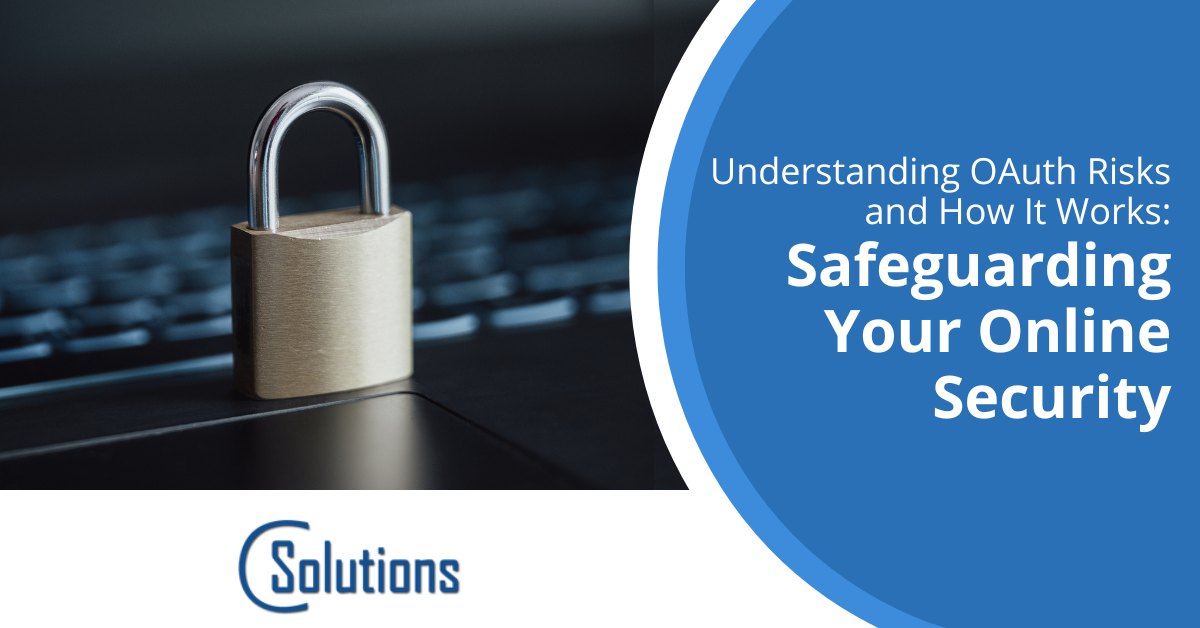Understanding OAuth Risks and How It Works: Safeguarding Your Online Security

In today’s interconnected digital world, the security of our online accounts and personal information is of utmost importance. One widely adopted authentication mechanism that ensures secure access to various applications and services is OAuth.
However, like any technology, OAuth is not without its risks. In this article, we will delve into the concept of OAuth, its vulnerabilities, and effective measures to mitigate potential threats. Additionally, we will briefly touch upon the topic of rogue RDP attacks and explore their similarities to OAuth attacks.
What is OAuth?
OAuth, short for Open Authorization, is an open standard protocol used for granting secure access to user data without disclosing passwords to third-party applications. It allows users to grant access to their information on one website or application to another, without the need to share their credentials directly. OAuth simplifies the authentication process, enhances user experience, and provides better control over data sharing.
The OAuth Workflow
- User Authorization: The user initiates the OAuth process by accessing a service or application (referred to as the “Client”) that requires access to their protected resources.
- Authorization Request: The Client sends an authorization request to the resource owner (e.g., social media platform) to gain permission for accessing the user’s data.
- User Consent: The resource owner prompts the user to authorize the requested access by presenting a login page or consent screen.
- Authorization Grant: Once the user grants permission, the resource owner issues an authorization grant to the Client.
- Access Token Request: The Client presents the authorization grant to the authorization server (typically operated by the resource owner) and requests an access token.
- Access Token Issuance: The authorization server validates the authorization grant and issues an access token to the Client.
- Resource Access: The Client uses the access token to access the protected resources from the resource server (where the user’s data resides).
OAuth Risks and Vulnerabilities
While OAuth provides a robust framework for secure access delegation, it is essential to be aware of potential risks and vulnerabilities associated with its implementation. Some common OAuth risks include:
Phishing Attacks
Attackers can exploit OAuth by creating deceptive authorization pages to trick users into granting access to their accounts. These phishing attacks can lead to unauthorized access to sensitive information.
Insecure Token Storage
If access tokens are not securely stored, they can be compromised, allowing unauthorized access to protected resources.
Misconfigured OAuth Clients
Improperly configured OAuth clients may request excessive permissions, granting unnecessary access to user data. This increases the risk of data breaches and misuse.
OAuth Token Leakage
Leakage of access tokens through client-side vulnerabilities, such as cross-site scripting (XSS) or insecure token handling, can enable attackers to impersonate legitimate users.
Protecting Against OAuth Threats
To mitigate the risks associated with OAuth, it is crucial to implement the following best practices:
User Education
Promote user awareness regarding OAuth and educate them about the risks of granting excessive permissions to third-party applications. Encourage them to verify authorization requests before granting access.
Secure Token Storage
Ensure that access tokens and refresh tokens are securely stored, preferably using strong encryption and access controls. Tokens should not be exposed to client-side code or transmitted in URLs.
Strict OAuth Scope Management
OAuth clients should request the minimum necessary permissions from the resource owner. Regularly review and update OAuth scopes to align with the principle of least privilege.
Multi-Factor Authentication
Implement multi-factor authentication (MFA) mechanisms to add an extra layer of security to the OAuth workflow. MFA can significantly reduce the risk of unauthorized access.
Rogue RDP Attacks: A Comparison
Rogue Remote Desktop Protocol (RDP) attacks involve unauthorized access to systems through unsecured RDP connections. While they differ from OAuth attacks in terms of the underlying technology, both share similarities concerning the potential for unauthorized access and exploitation of user data. Understanding the risks and implementing security measures can help defend against both types of attacks.
Protect Yourself Today
OAuth plays a vital role in providing secure access to user data across multiple applications and services. However, its implementation requires careful consideration of potential risks and vulnerabilities. By understanding OAuth workflows, recognizing common threats, and implementing appropriate security measures, users and service providers can safeguard against OAuth attacks and ensure a safer online environment.
Contact C Solutions IT today to learn more about securing your applications and protecting your data from OAuth-related risks.
